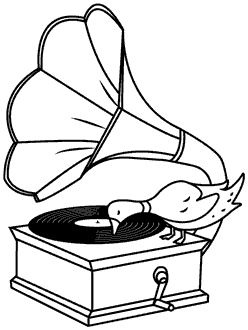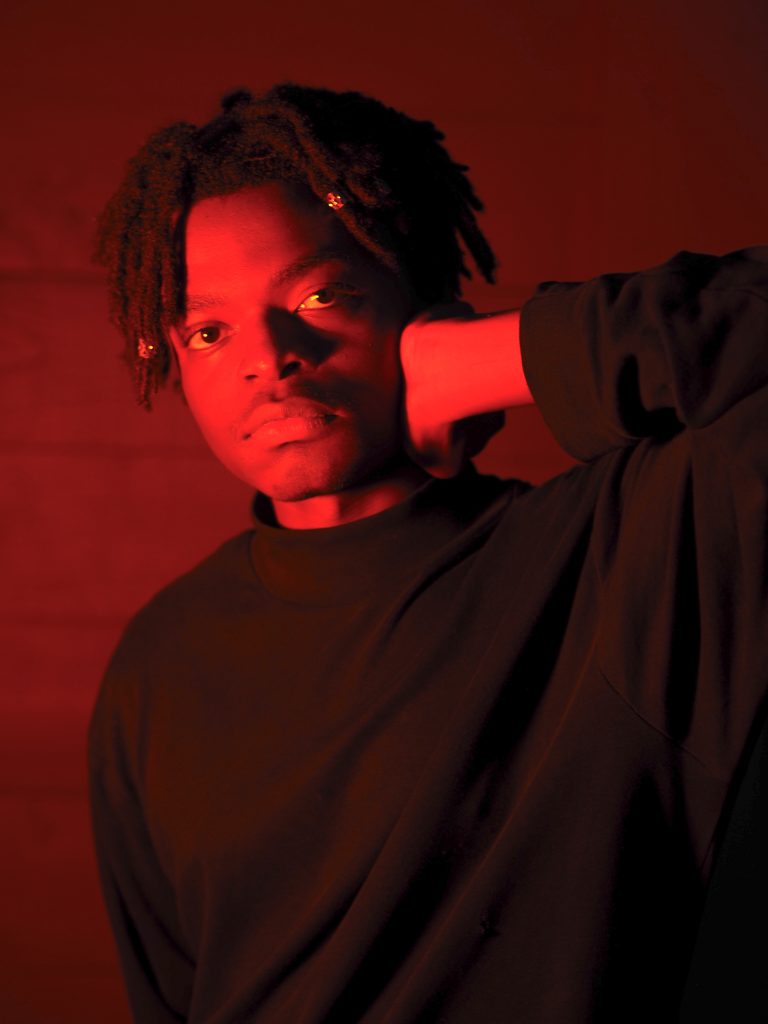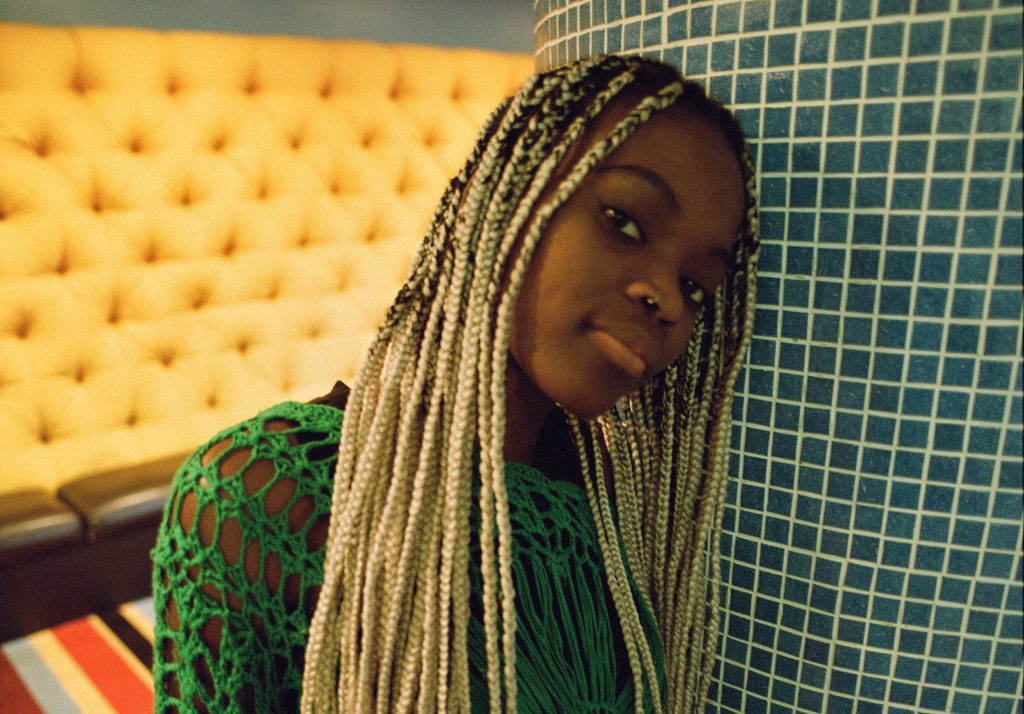
Fresh out of high school, Hannah Jadagu released her debut EP, What Is Going On?, a collection of intimate bedroom pop tracks recorded entirely on an iPhone 7, which was, at the time, Jadagu’s most accessible mode of production. An off-the-cuff approach to music making and instinctive ability to write unforgettable hooks belied the intensity of Jadagu’s subject matter. In a short run time, What Is Going On? confronts some of the nation’s most urgent struggles all through Jadagu’s compassionate perspective. “I want my songs to be both super intimate and still universally relatable,” Jadagu says. “With the EP, so many people told me that the songs resonated with them on a personal level, and that’s what I’m always hoping for.”
Resonate it did; What Is Going On? is Jadagu’s first Sub Pop release, but she’d been putting out music on SoundCloud for years, garnering a small online fanbase as she settled into an aesthetic, and recognition from a broader audience was overdue. “It really took off when I became a percussionist in my middle school’s band,” she says. “Writing songs started as a hobby and quickly became a passion to the point that I spent all my free time recording.”
On May 19th, 2023 Jadagu premieres Aperture, her first LP and most ambitious work to date. Written in the years between graduating from high school in Mesquite, TX and her sophomore year of college in New York, Aperture finds Jadagu in a state of transition. “Where I grew up, everyone is Christian; even if you don’t go to church, you’re still practicing in some form,” Jadagu says, laughing. “Moving out of my small hometown has made me reflect on how embedded Christianity is in the culture down there, and though I’ve been questioning my relationship to the church since high school, it’s definitely a theme on this album, but so is family.”
As a kid, Jadagu followed her older sister – a major source of inspiration who she refers to as “the blueprint” – to a local children’s chorus, where she received choral training. “I hated it,” Jadagu admits. “But it taught me how to harmonize, how to discover my tone, how to recognize and write melody.” The aching single “Admit It” is dedicated to Jadagu’s sister, whose boundless love and impeccable taste has been a constant for Jadagu ever since she was a kid. At home, the siblings were raised on mom’s Young Money mixtapes and the Black Eyed Peas (to whom she credits her love of vocoder) but it was in the sanctity of her sister’s car that Jadagu discovered indie artists who would go on to inspire her work.
“Lose” showcases Jadagu’s love of contemporary indie auteurs as it weaves a spare and unpretentious guitar riff with barebones piano chords all while Jadagu sings about the thrill and underlying fear that comes with beginning a new relationship. It is, in her words, a “classic pop song.” “The things we haven’t done/ Play out in my mind/ Would you just give me time?” she sings, nearing the end, as the skittering drumbeat propels the song from a place of contemplative yearning to defiance. “Every track on this album, except for “Admit It”, was written first on guitar, which is an instrumental throughline,” Jadagu says. “But the blanket of synths I use throughout helps me move between sensibilities. There’s rock Hannah, there’s hip-hop Hannah, and so on. I didn’t want any of the songs to sound too alike.”
Emblematic of this ethos is the single “Warning Sign,” which starts out as an acoustic, R&B slowburner before a muscular electric guitar enters the mix and the song morphs into something akin to psychedelic. “I knew I could make another album on my phone, but I wanted to make sure that I was leveling up, especially for the debut,” Jadagu says. So she began the difficult process of searching for a co-producer capable of complementing her work without dominating it. Enter Max Robert Baby, a French songwriter and producer who captured Jadagu’s attention with his take on Aperture’s lead single “Say It Now.” The duo worked together remotely, sending stems to one another via email, before eventually meeting in-person for the first time at Greasy Studios on the outskirts of Paris.
“When I recorded my EP, it was all MIDI, but in the studio Max and I worked with a ton of analog instruments,” Jadagu says. “There’s some Glockenspiel on the album, calling back to my percussionist days, and some synth warping that adds texture.” While What Is Going On? was heavy on layered reverb, making Jadagu’s vocals feel “shy,” she took what she calls a more “intimate, up close” approach while recording her voice for the LP. That experimentation is best heard on the rousing “What You Did,” which leverages crushing accusations against the song’s unnamed subject. Screaming static and a crunchy guitar part softens under Jadagu’s calm delivery as she sings: “Act like it’s best if we make amends, but I dont wanna talk to you again.”
An aperture is strictly defined as an opening, a hole, a gap. On a camera, it’s the mechanism that light passes through, allowing a photographer to immortalize a moment in time. For Jadagu, the word perfectly encapsulates the mood of her debut album. In the years it took her to complete, she faced moments of darkness, sure, but the process of making it, her first ever in a professional studio, was ultimately a cathartic experience, one she now shares with you, the listener. Let the light in.

Miloe
The story of Miloe begins in the pews of a church in the Democratic Republic of the Congo. Where Bobby Kabeya’s family would congregate every Sunday was a place where community and rhythm entwined. Every week as parents sang in the choir, Kabeya remained transfixed by the percussion section’s ability to keep the entire congregation on its feet. When he and his three younger brothers would return home, they’d turn to the warm enveloping sounds of everything from rumba to reggae, genres championed by nineties Afropop stars such as Papa Wemba, Lokua Kanza and Lucky Dube.
The sonic imprint of those days in the Congo stayed palpable when the Kabeyas made the 7000 mile journey to Minneapolis to join their father, who had been granted asylum three years prior. Suddenly dropped into the land of such punk legacies as Husker Dü, The Replacements, and Soul Asylum and Prince, Bobby’s musical destiny had perhaps unwittingly been cut out for him. Almost immediately he joined his high school band as a percussionist, fashioning its utility closet as a makeshift practice space for the first iterations of his own band to jam out. Midway through high school, he began producing his own material as Miloe, a name cheekily abstracted from Coldplay’s indie-pop behemoth Mylo Xyloto.
While working his way through the Twin Cities’ basement show circuit, Kabeya chipped away at Miloe’s debut EP, releasing a handful of iterations of the low-fi project before landing on a final version in 2019. After a member of Beach Bunny discovered his music, Miloe was asked to open for the skyrocketing Chicago band at a Minneapolis gig. His performance caught the eye of audience member Jake Luppen of Hippo Campus, who offered to help produce Kabeya’s next project. A marathon three-day studio session with Luppen transformed a handful of demos Kabeya had stashed away into the Greenhouse EP, which was eventually released in October 2020. The project showcased a sunnier, pop-oriented side to Miloe. He nabbed a hit with lead single “Winona,” which was later gilded with vocals from Jamila Woods and Vagabon on a 2021 remix.
Though Kabeya wasn’t able to properly tour the project upon its release, his creative momentum remained in perpetual motion. Catalyzed by having his own space for the first time, he began to write his new project Gaps with the intention of bridging the funk-rock inclinations of Minneapolis with the ebullient Congolese sounds of his upbringing. What resulted is songs that magnify his idiosyncrasies while prioritizing the groove: “I wanted to make something that would make me dance, that would generate new energy,” he says of the project’s buoyant lead single “where u are.”
Gaps stays heavily syncopated and expertly textured across its six tracks, often achieved by utilizing his immediate means, such as plucking his Acoustasonic to emulate marimba or incorporating the sound of his neighbor’s wind chimes as heard through his bedroom window at 4 AM. It’s a stop on the journey, but Kabeya also sees it as a flow state. “It’s a place where music can take you, where time isn’t really a construct and you can zone into this meditative state of jamming. It’s a gap, of sorts. A different realm.”



